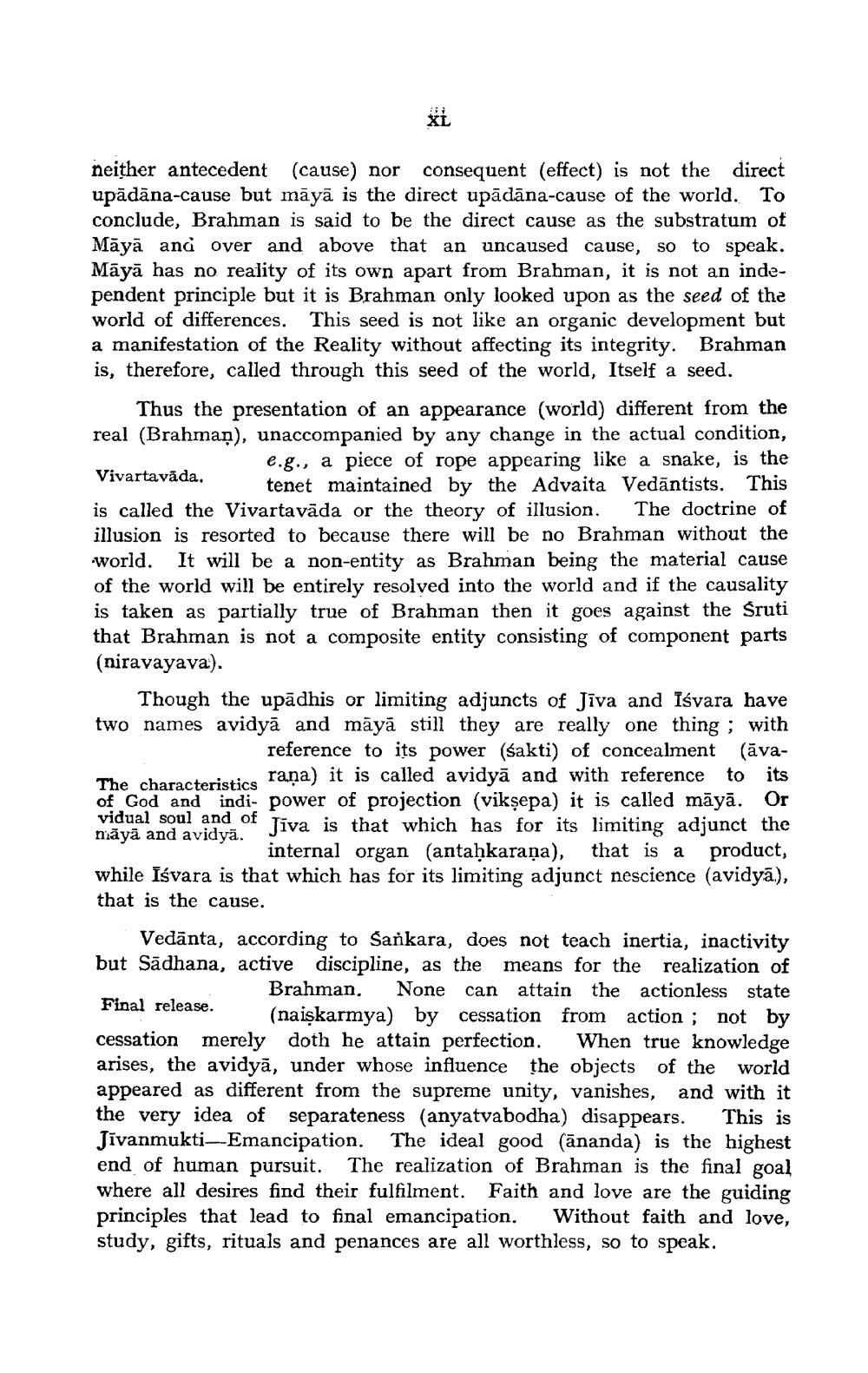________________
**
XL
neither antecedent (cause) nor consequent (effect) is not the direct upādāna-cause but māyā is the direct upādāna-cause of the world. To conclude, Brahman is said to be the direct cause as the substratum of Māyā and over and above that an uncaused cause, so to speak. Māyā has no reality of its own apart from Brahman, it is not an independent principle but it is Brahman only looked upon as the seed of the world of differences. This seed is not like an organic development but a manifestation of the Reality without affecting its integrity. Brahman is, therefore, called through this seed of the world, Itself a seed.
Vivartavāda.
Thus the presentation of an appearance (world) different from the real (Brahman), unaccompanied by any change in the actual condition, e.g., a piece of rope appearing like a snake, is the tenet maintained by the Advaita Vedāntists. This is called the Vivartavāda or the theory of illusion. The doctrine of illusion is resorted to because there will be no Brahman without the world. It will be a non-entity as Brahman being the material cause of the world will be entirely resolved into the world and if the causality is taken as partially true of Brahman then it goes against the Śruti that Brahman is not a composite entity consisting of component parts (niravayava).
Though the upādhis or limiting adjuncts of Jīva and Isvara have two names avidya and māyā still they are really one thing; with reference to its power (śakti) of concealment (ăvaThe characteristics rana) it is called avidya and with reference to its of God and indi- power of projection (vikṣepa) it is called māyā. Or vidual soul and of Jiva is that which has for its limiting adjunct the internal organ (antaḥkarana), that is a product, while Iśvara is that which has for its limiting adjunct nescience (avidya), that is the cause.
māyā and avidya.
Vedanta, according to Sankara, does not teach inertia, inactivity but Sadhana, active discipline, as the means for the realization of Brahman. None can attain the actionless state
Final release. (naiskarmya) by cessation from action; not by cessation merely doth he attain perfection. When true knowledge arises, the avidya, under whose influence the objects of the world appeared as different from the supreme unity, vanishes, and with it the very idea of separateness (anyatvabodha) disappears. This is Jivanmukti-Emancipation. The ideal good (ananda) is the highest end of human pursuit. The realization of Brahman is the final goal where all desires find their fulfilment. Faith and love are the guiding principles that lead to final emancipation. Without faith and love, study, gifts, rituals and penances are all worthless, so to speak.




